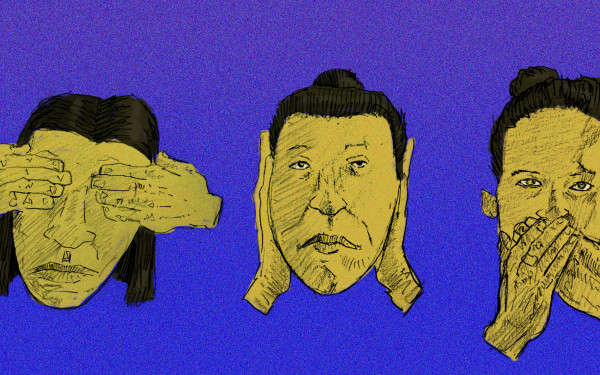The sound of collective grief
Salima Punjani’s Death Cafes use sound and vibration to hold space for grief and transformation
Participants sit around the workshop at OBORO holding iPads and vibrotactile pillows. They’re participating in a Sonic Death Café, a safe space to feel and connect with grief.
“Something that I have noticed, both as someone trained in mental health care and as an artist, is that there's all this bypassing of holding the difficult things that are happening,” Salima Punjani said.
Punjani is a Montreal-based artist who uses vibrotactile technology, a system that uses vibrations to create sensations on the skin and transmit information to the brain.
According to Tamar Tembeck, OBORO’s artistic director, the Sonic Death Cafés are an opportunity for people to come together, attune to each other and open themselves up to experiences of listening.
“Salima creates a warm, welcoming environment for participants,” Tembeck said. “In a world where the pressures of productivity and acceleration are constant, the opportunity she creates for people to dedicate their time and attention to some of the challenges they may be experiencing, individually and collectively, is both welcome and necessary.”
In 2022, Punjani was invited to a residency in Sierre, Switzerland, where she became interested in the collectivity of rituals surrounding death. She explored ossuaries—sites where human bones are stored. She also visited the Fontaine des Morts, a mythical fountain where the dead are said to pause for a drink of water, and attended a death cafe in a nearby town.
This residency inspired her to start hosting death cafes in Montréal.
Death cafes are traditionally a safe space for people, typically strangers, to discuss their feelings, thoughts and understanding of death. They were introduced by Swiss sociologist Bernard Crettaz, who organized the first ‘café mortel,’ or death cafe, in 2004 to create spaces that normalized talking about death

“I think it comes back to this avoidance of discomfort, where we just soothe without actually digging into the discomfort that's so present,” Punjani said. “And I think we need more spaces to sit with discomfort and distress in a way that feels safe.”
The death cafes at OBORO start with an ear massage to put the nervous system in a more connected state. Punjani then hands out paper and asks everyone to think about something that feels heavy.
While death cafes are traditionally a safe space to think about death, Punjani explained that visitors can think about any difficult human experiences including eco-anxiety, intimate break-ups, aging or changes in physical and mental capacity.
When everyone has thought of what causes them grief, they choose a sound, and everyone takes turns listening. For example, a person experiencing grief over losing the natural environment might choose the sound of birds. This allows visitors to listen to each other in a way that doesn't require verbal communication.
People then draw what feels heavy for them and choose sounds that symbolize these feelings. Participants who are deaf or hard of hearing can use a sign. Everyone proceeds to listen together through vibrotactile pillows, creating a deep listening experience that is felt through the vibrations of each person’s chosen sound. The workshop ends with tea and cakes.
Unlike traditional death cafes, which rely heavily on verbal communication, the Sonic Death Cafés are largely felt.
“Because of the fragile nature of the cafes, it's very hard and intrusive to document,” said Pipo Pierre-Louis, a composer, new media and video artist responsible for the musical aspect of the project. “Instead, the idea was to transform that experience and give it another life. The subject brings depth and meaning to the compositional process.”
Punjani and Pierre-Louis have been working together since 2022 to develop a mobile spatial sound studio.
Pierre-Louis explained that after the gathering, he will use the sounds visitors brought to create micro compositions. Together, Punjani and Pierre-Louis will create a spatial sound piece based on the shared sounds. The goal is to create a space where people can come together and honour the collective grief from different perspectives.
“What I like the most about this is the idea of transmutation,” Pierre-Louis said. “In this case, by sharing something painful and allowing us to use the sounds, hopefully, people transform that burden into sound and music.”


_600_832_s.png)

_600_375_90_s_c1.jpg)
_600_375_90_s_c1.jpg)

